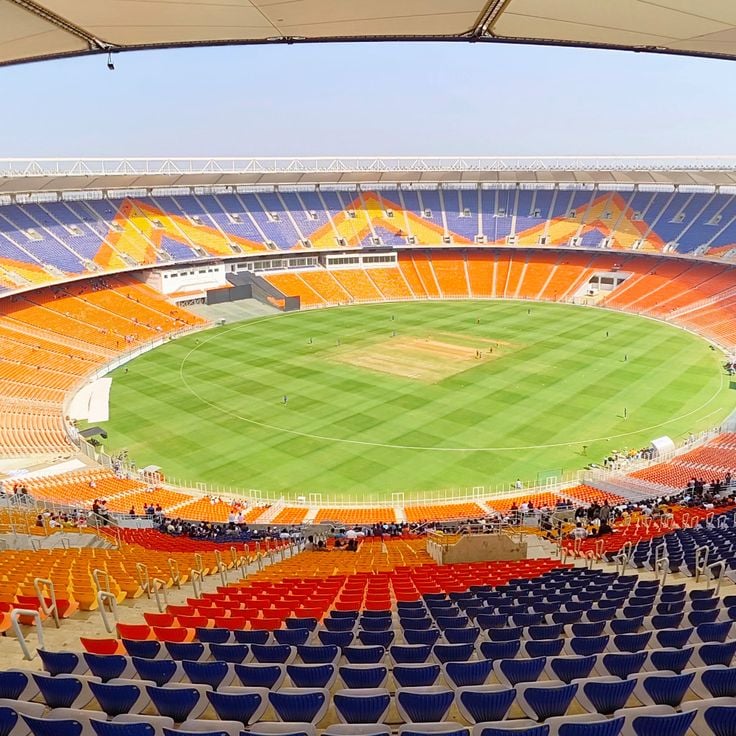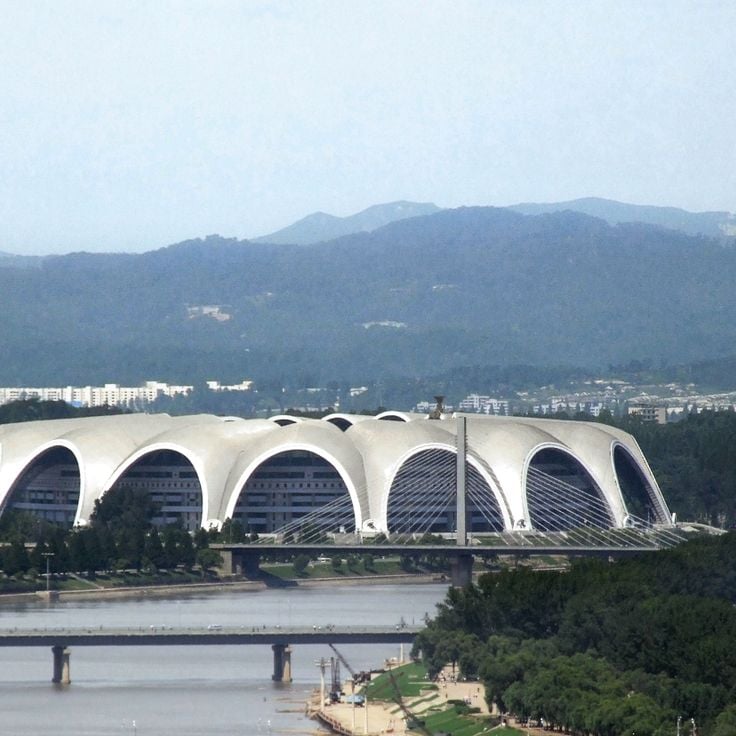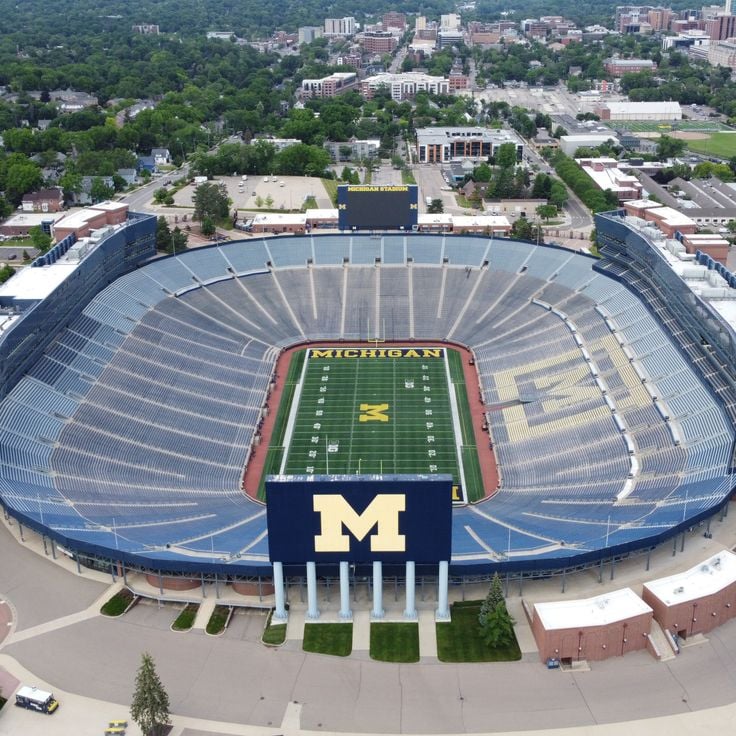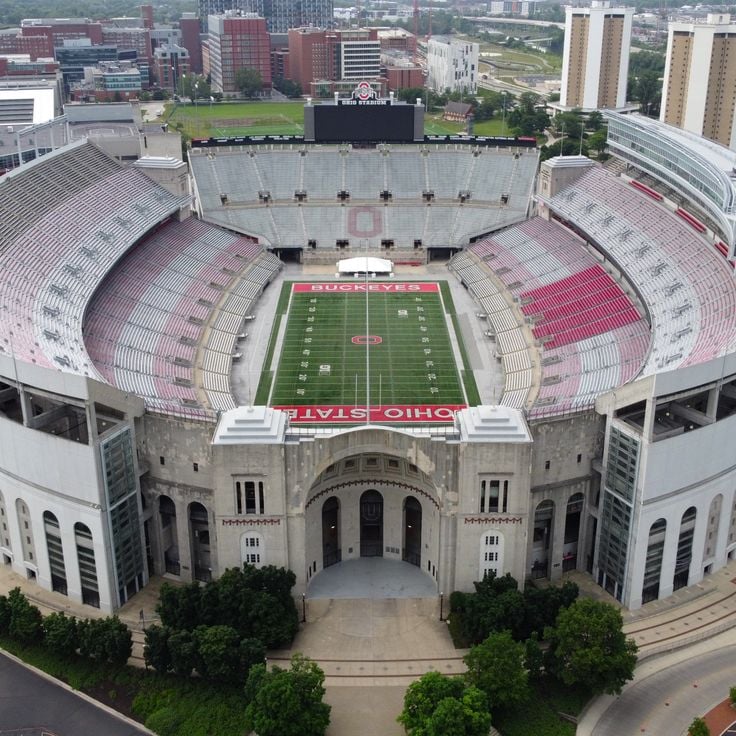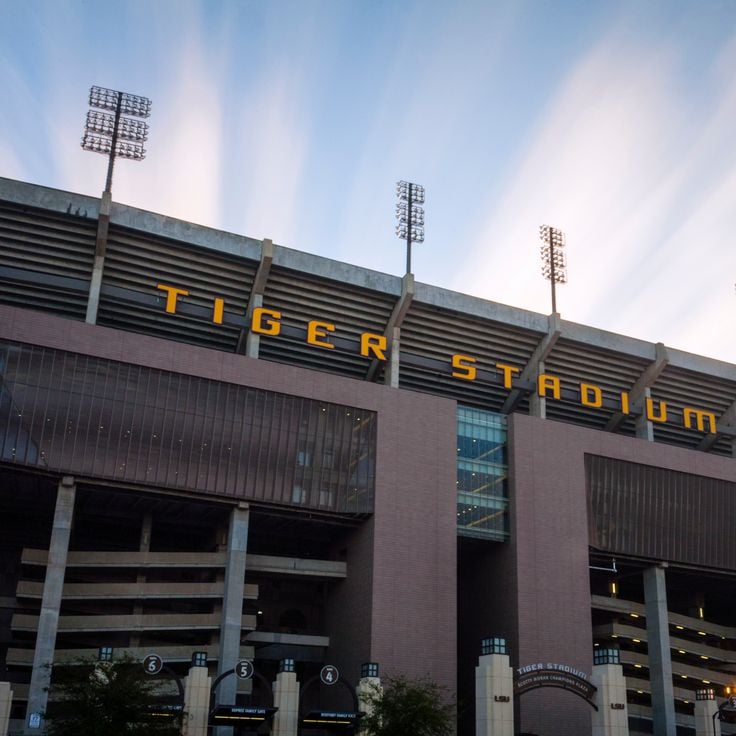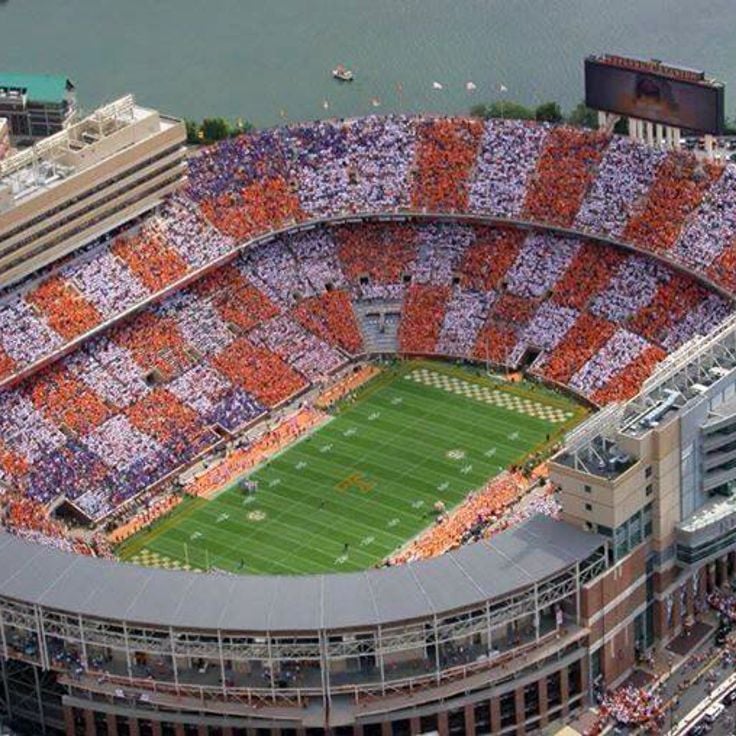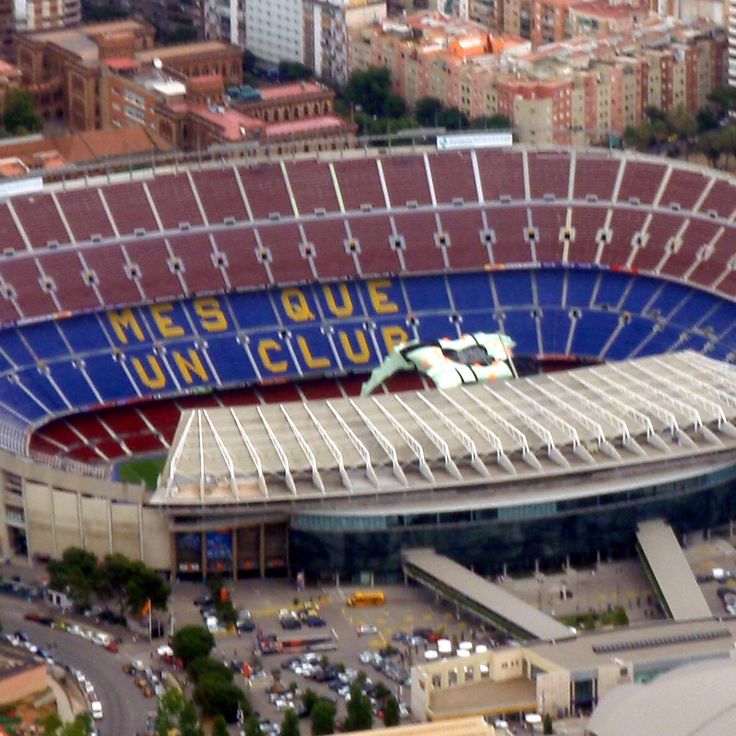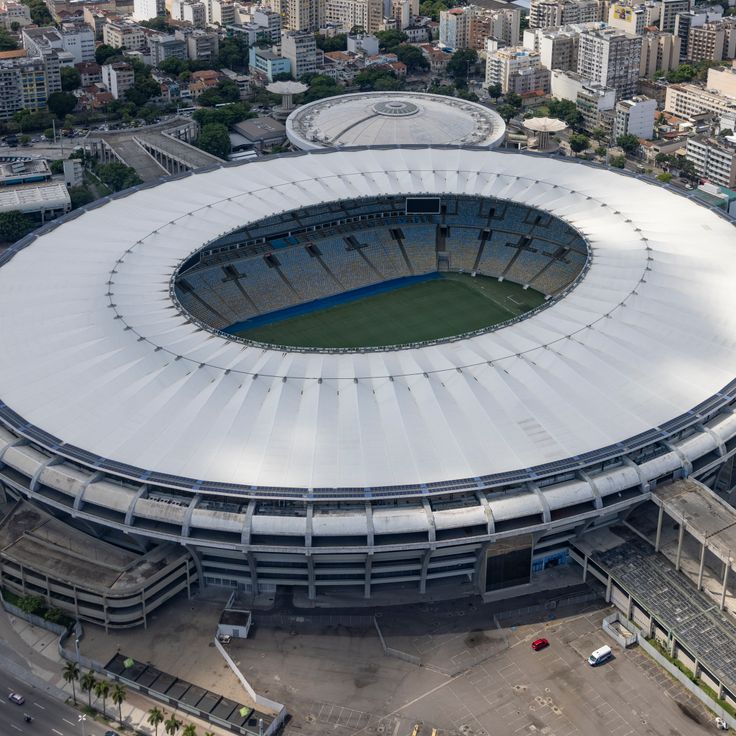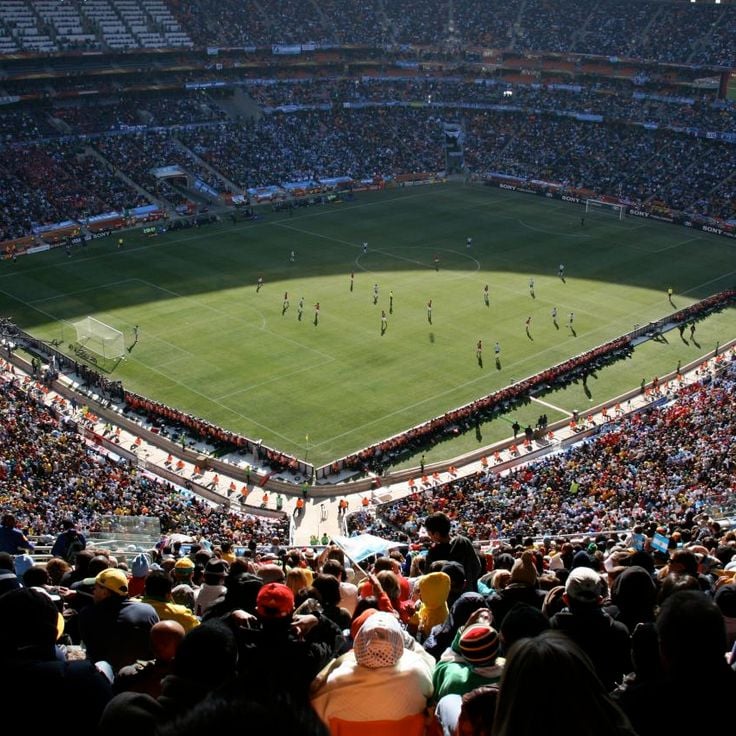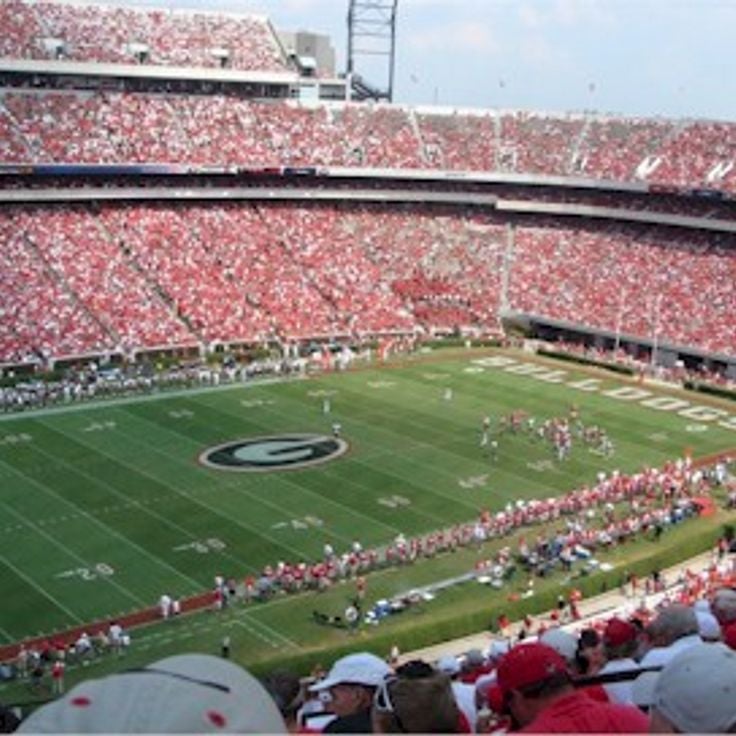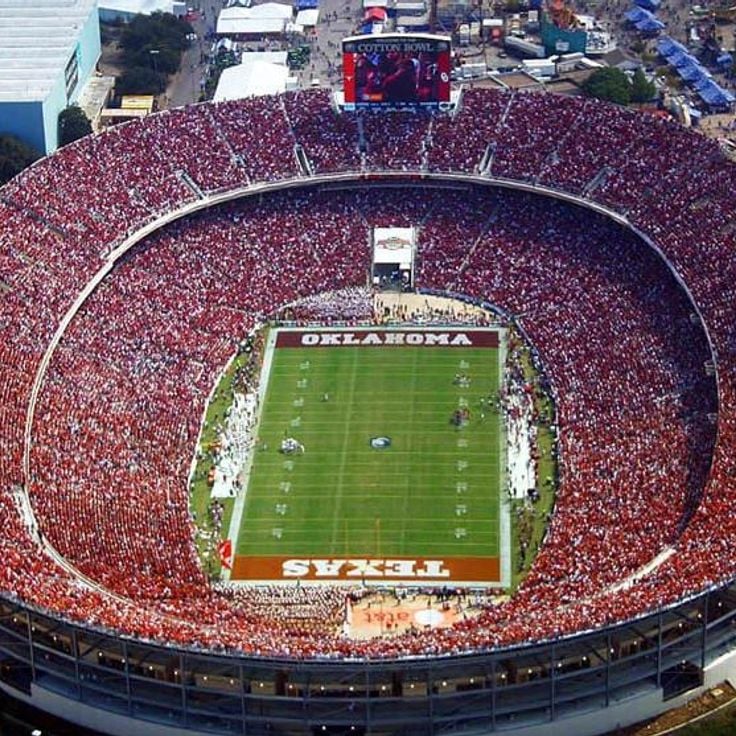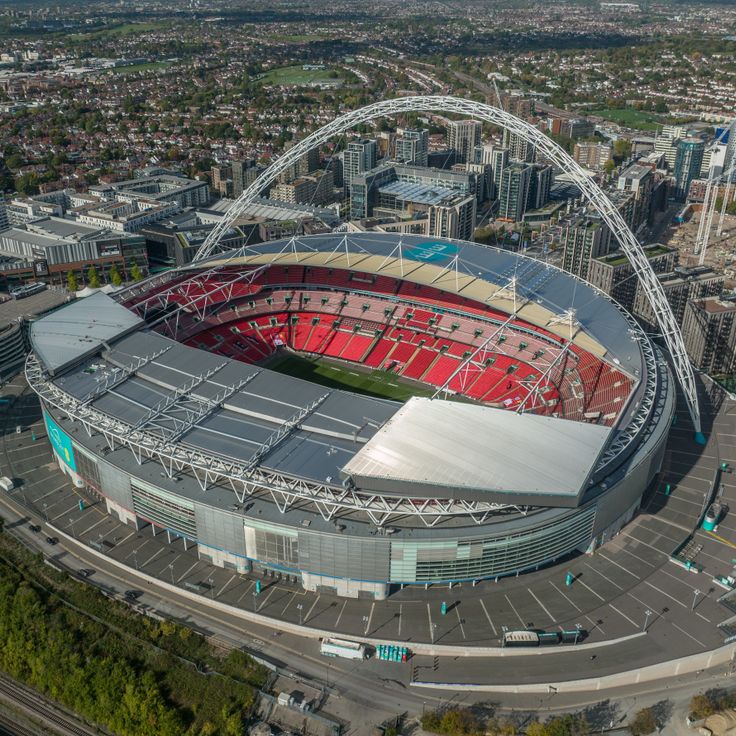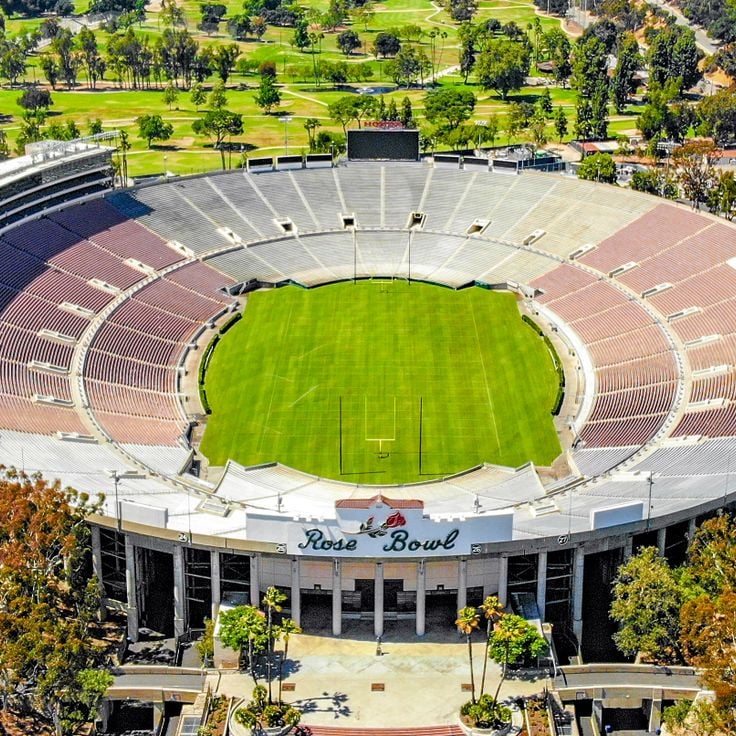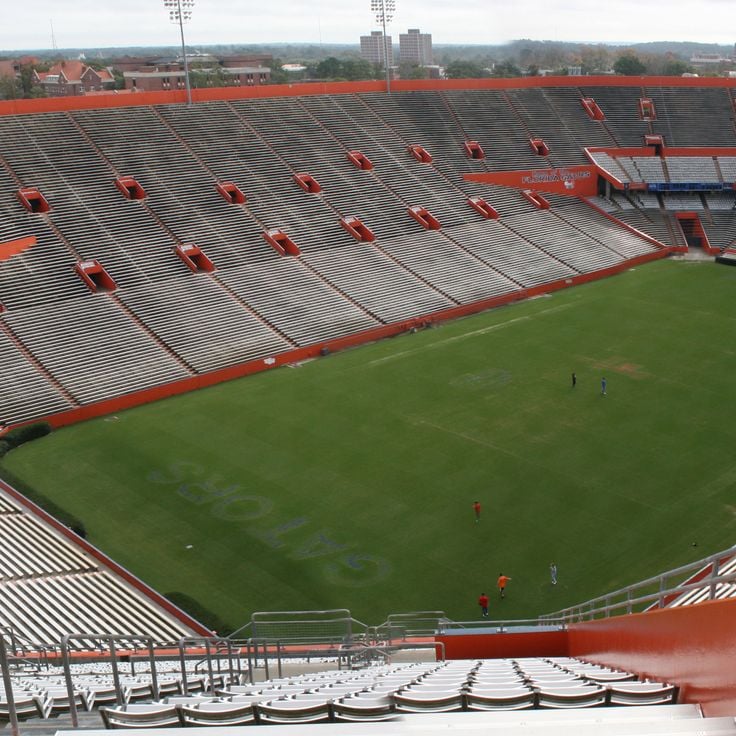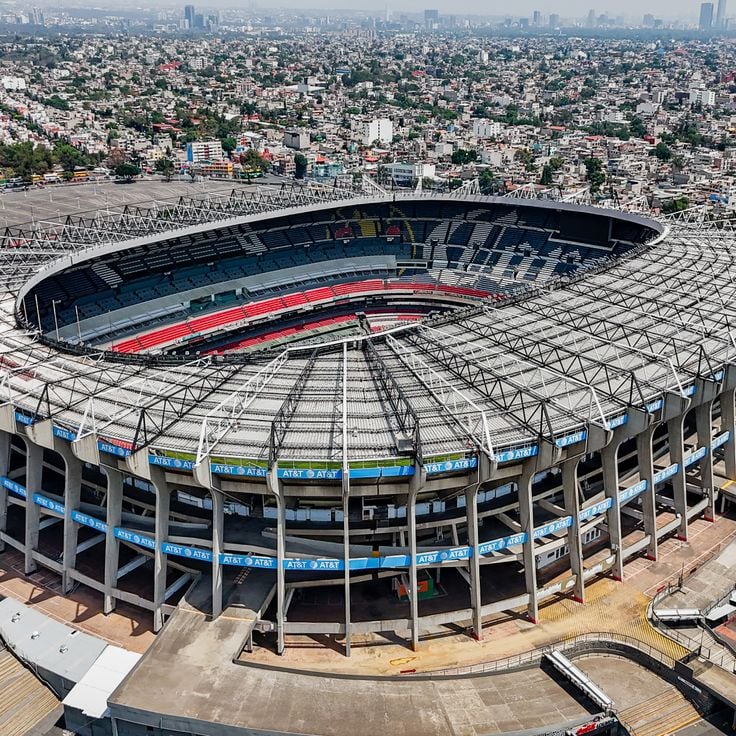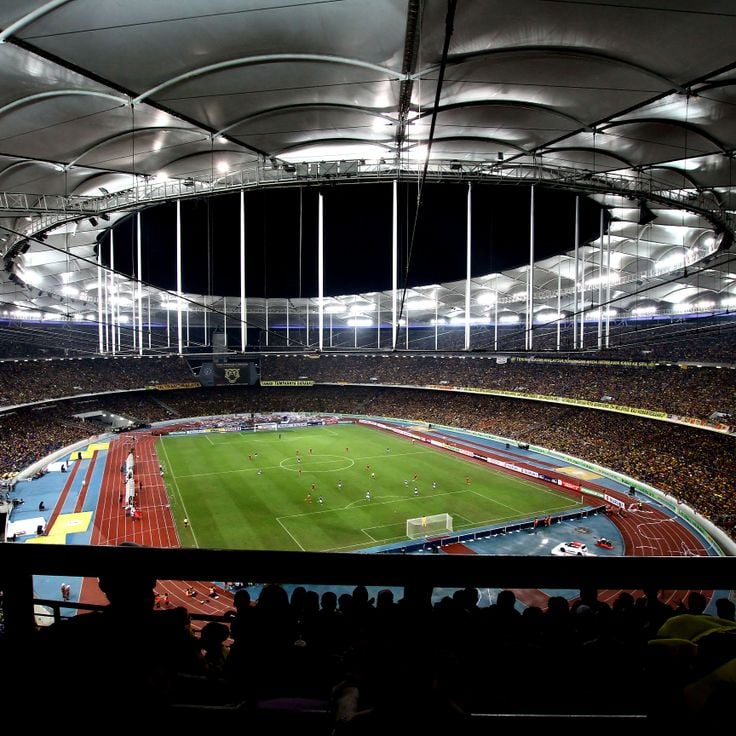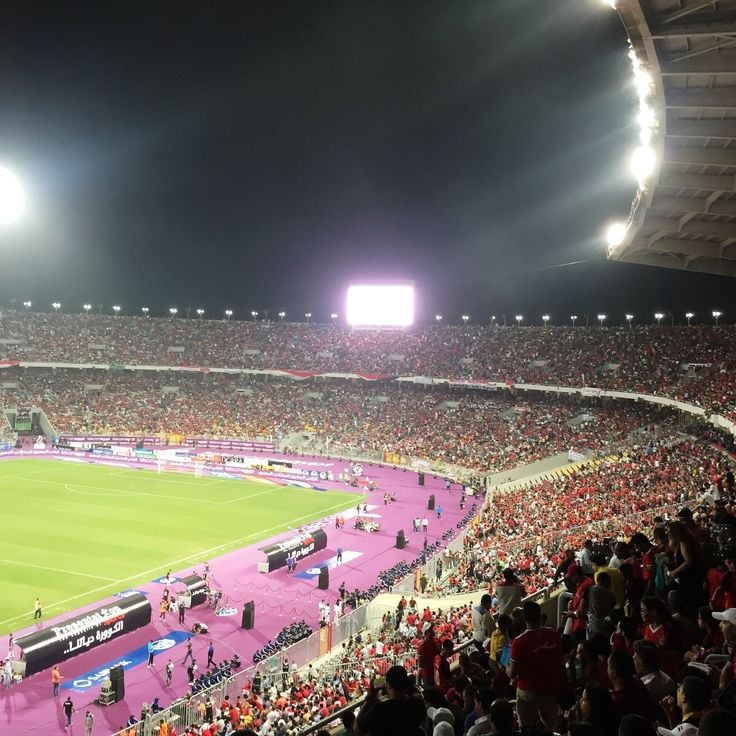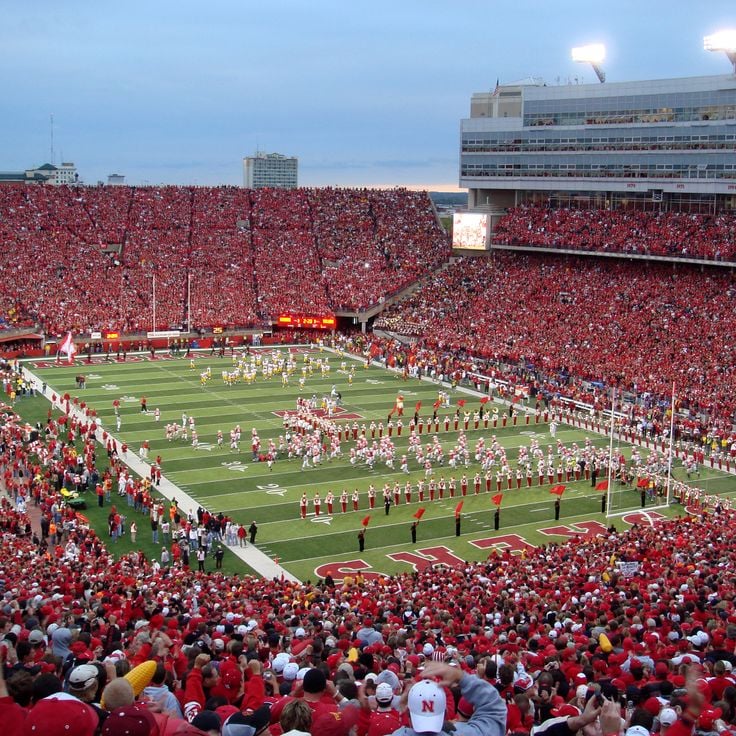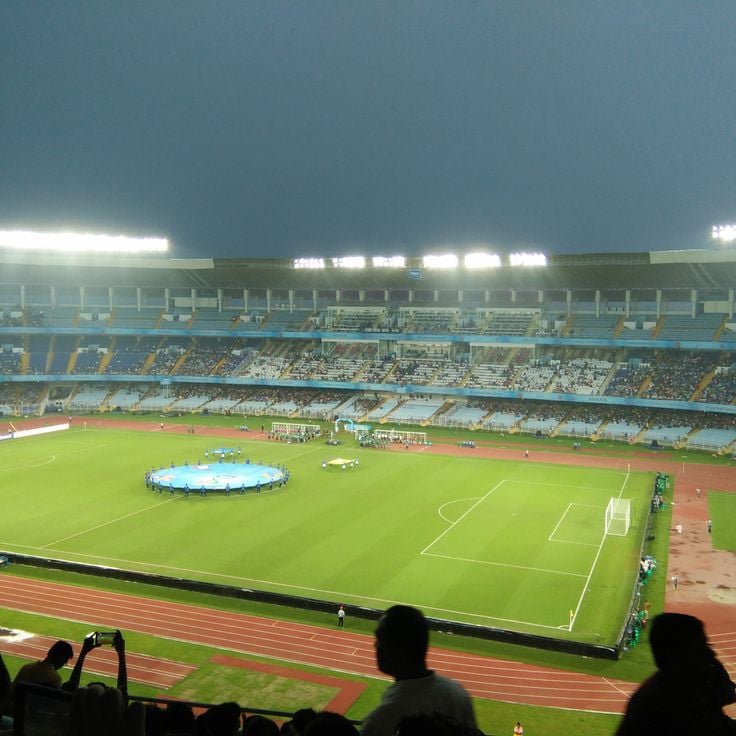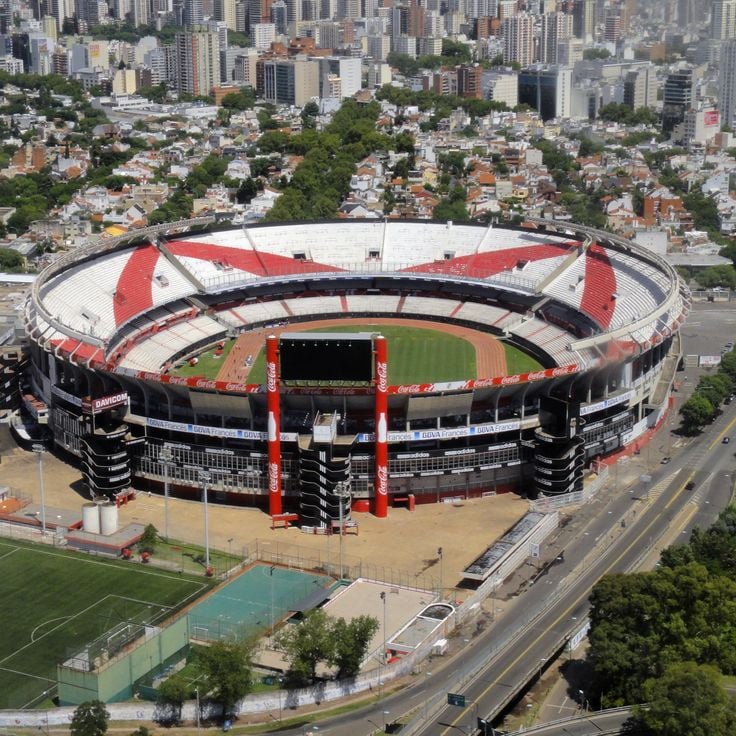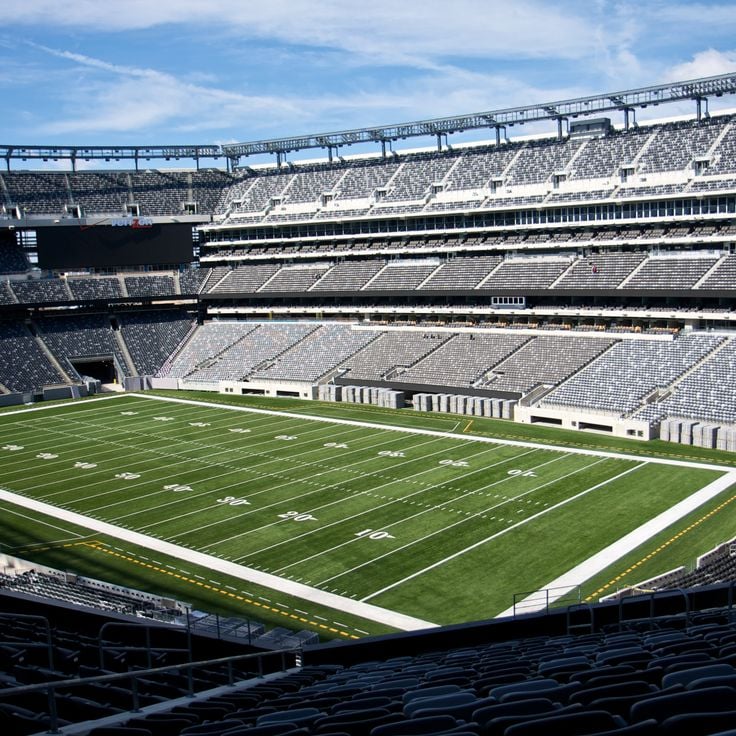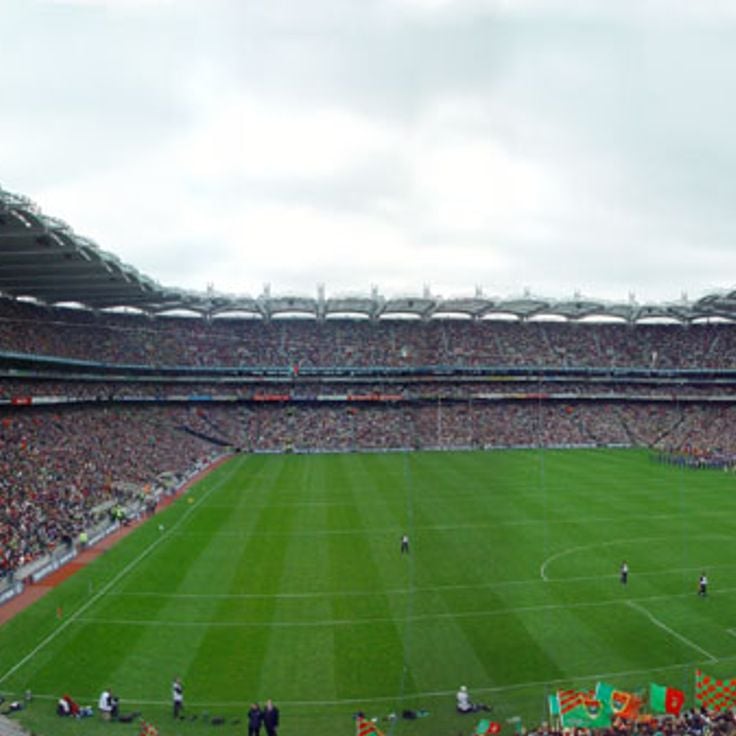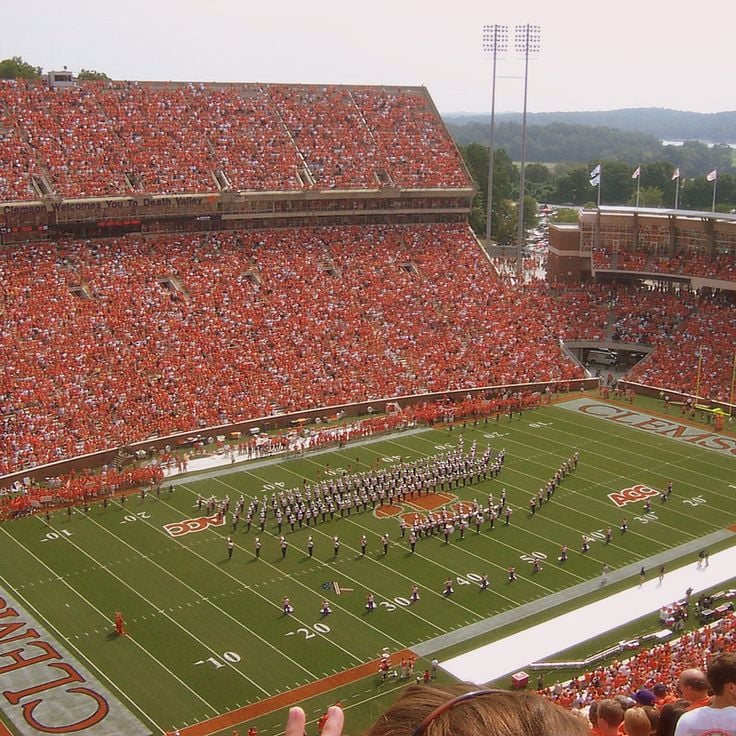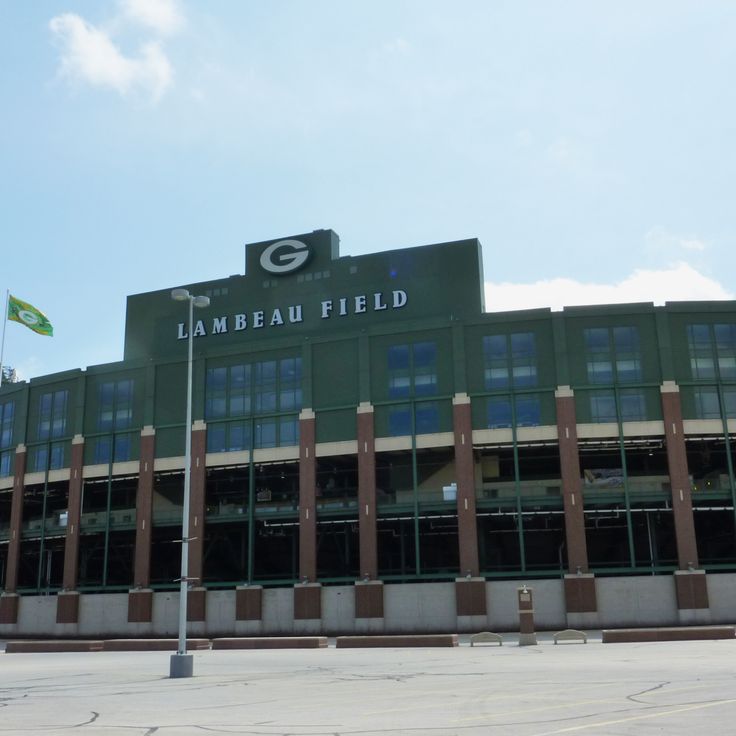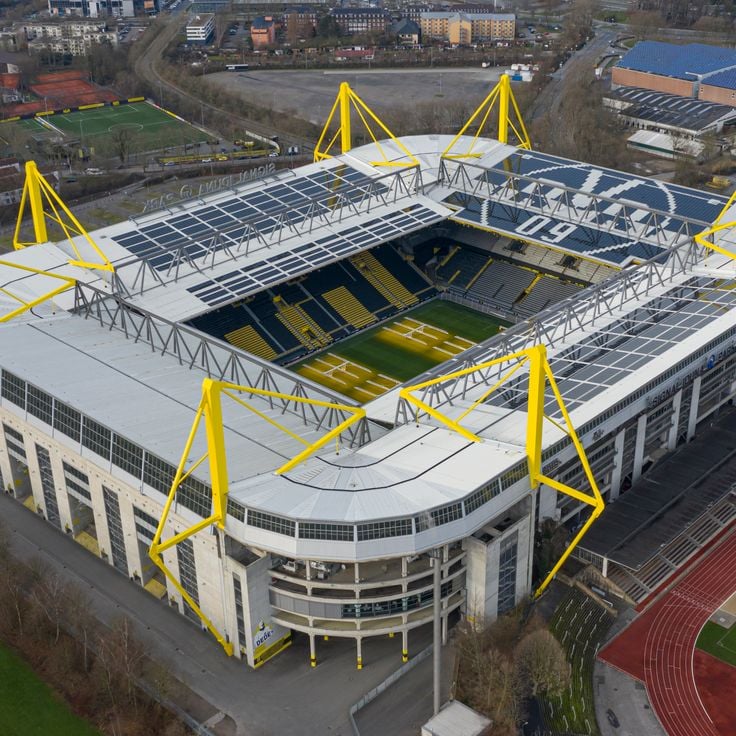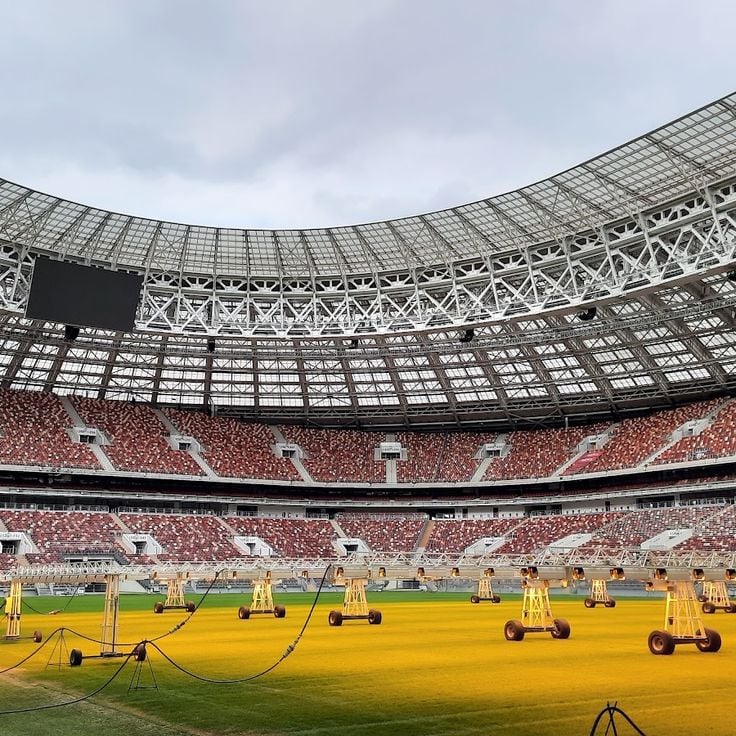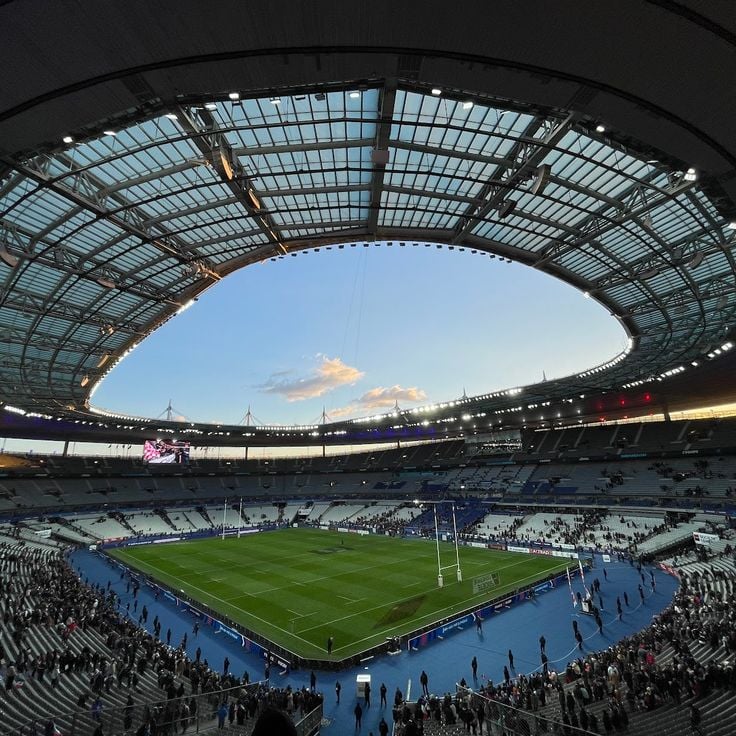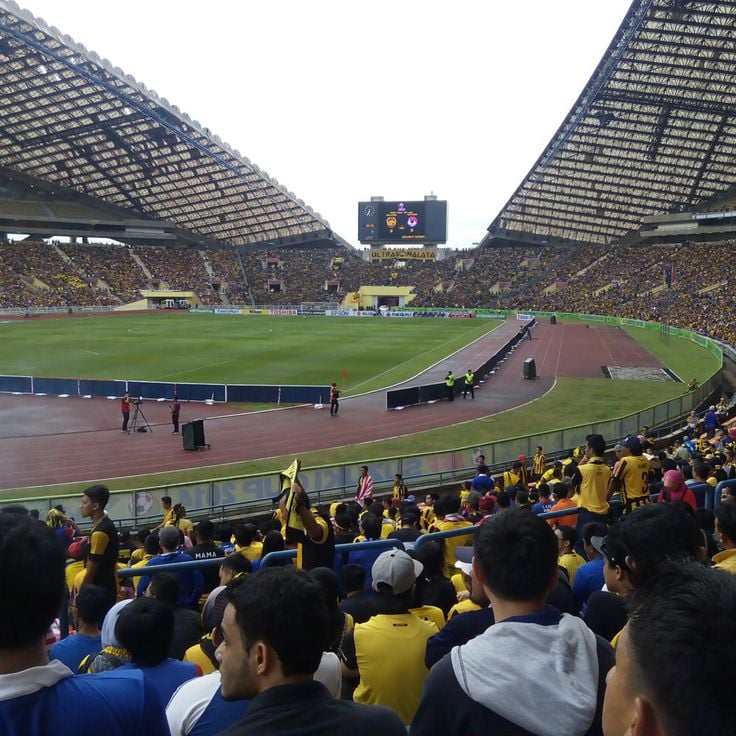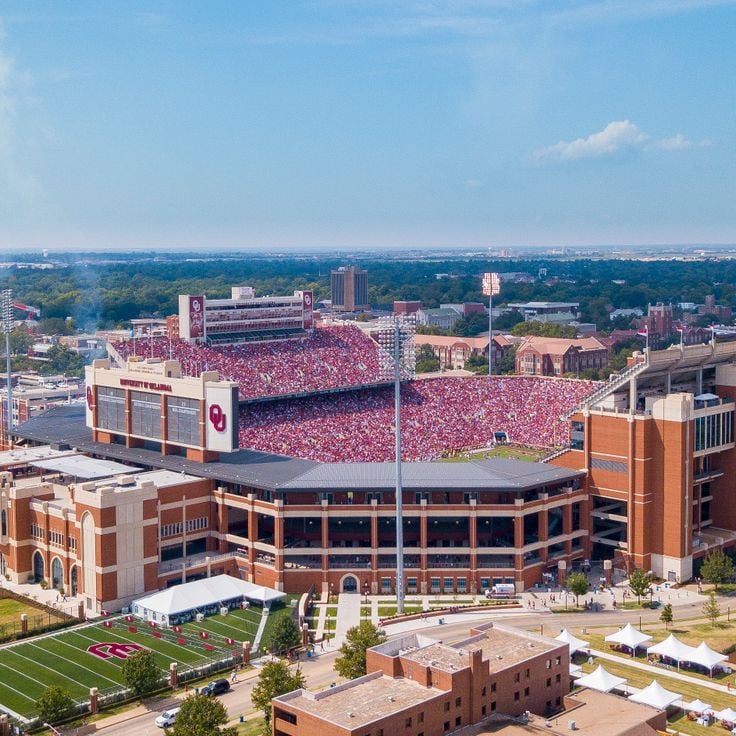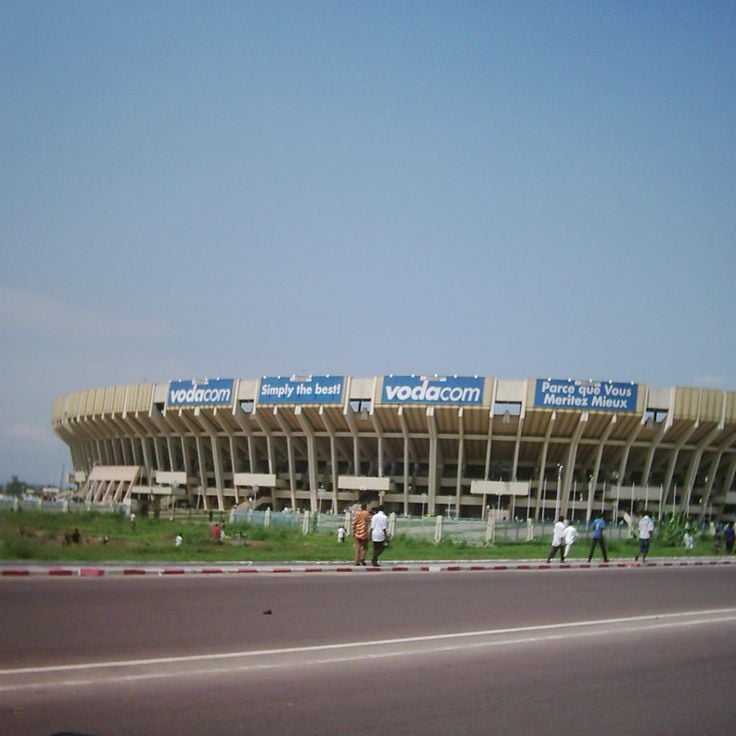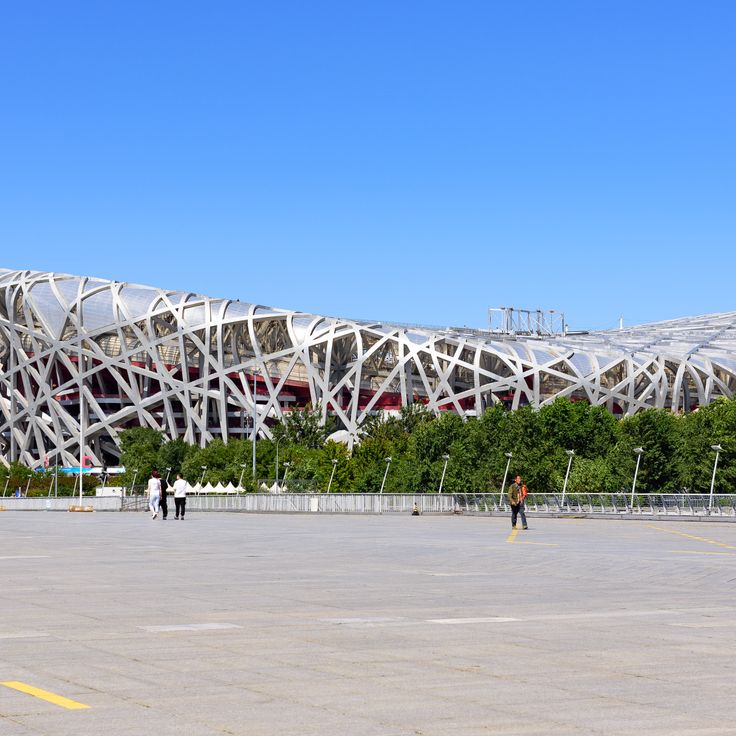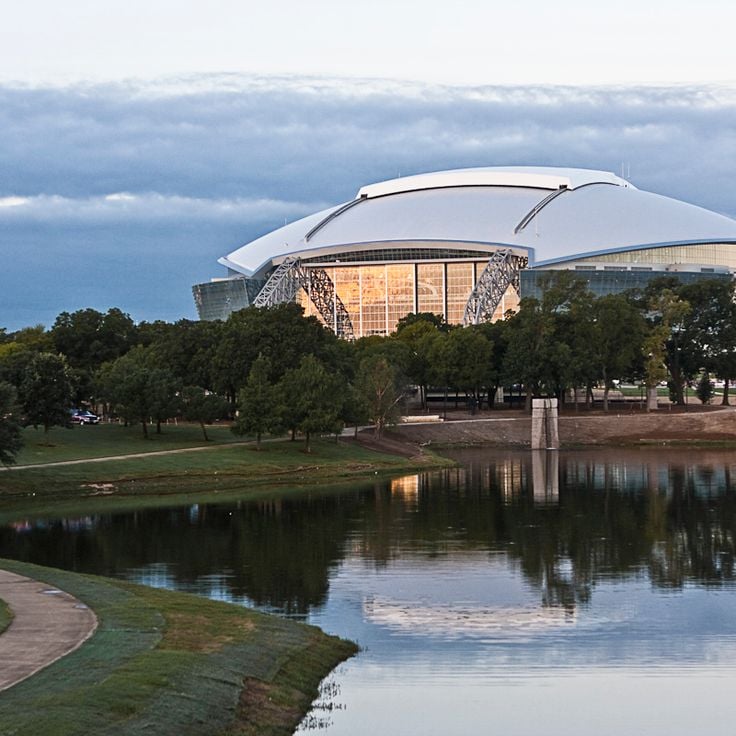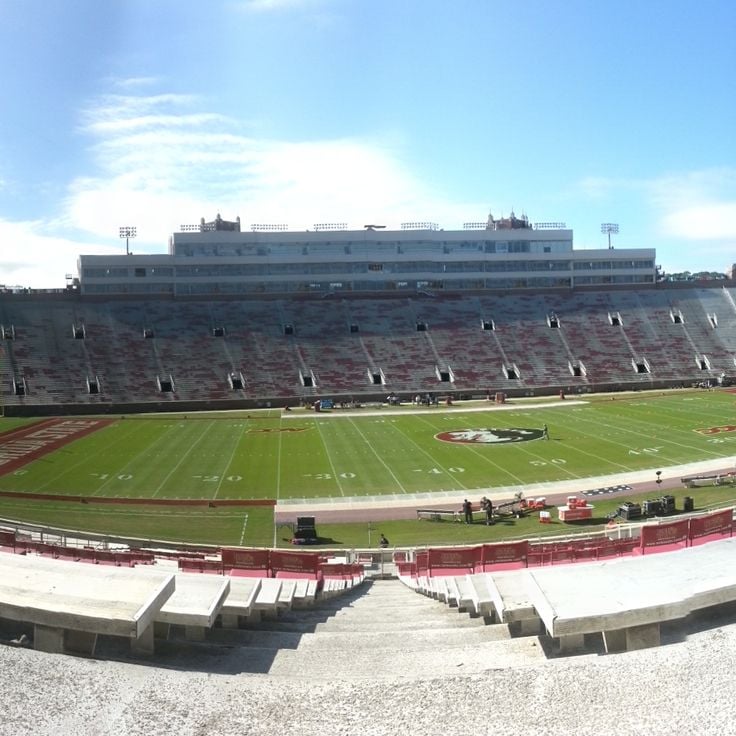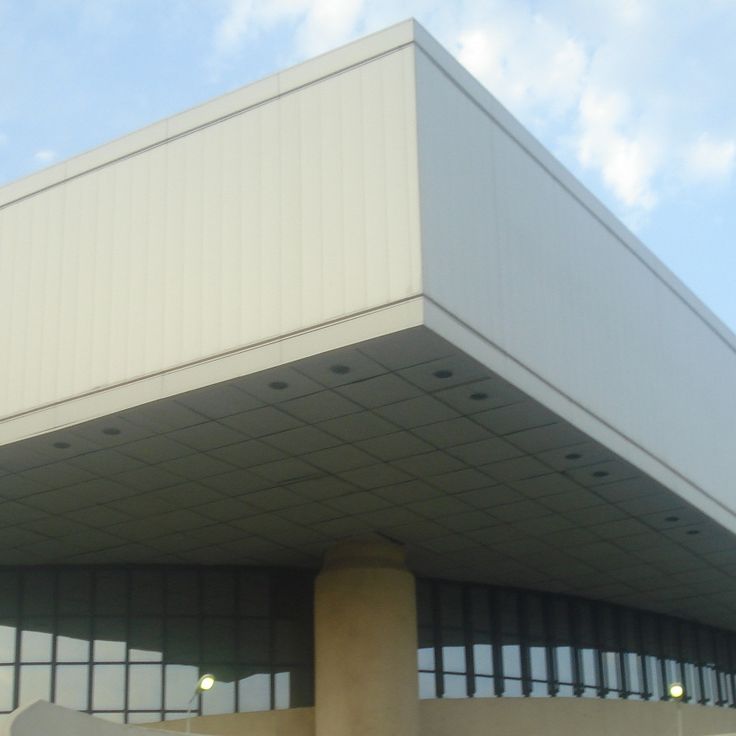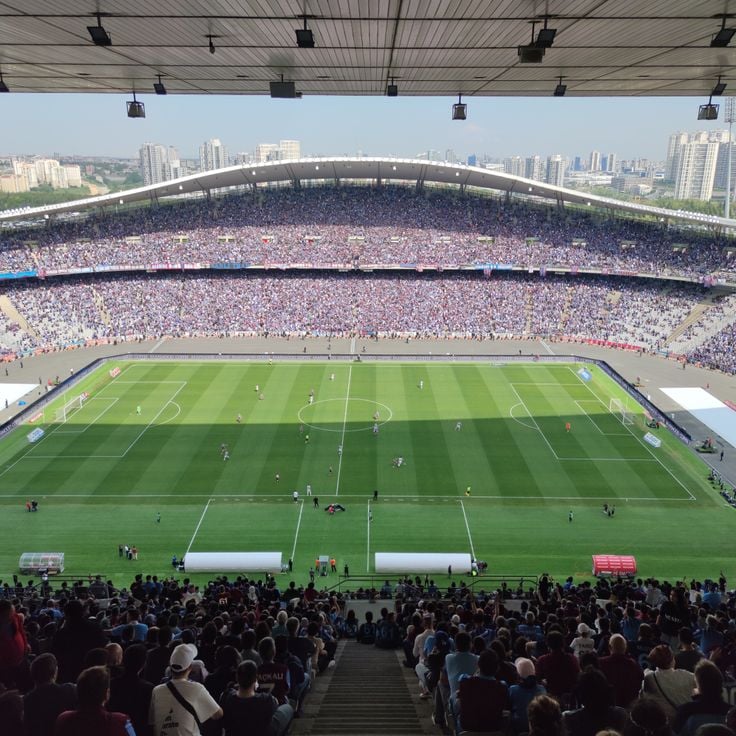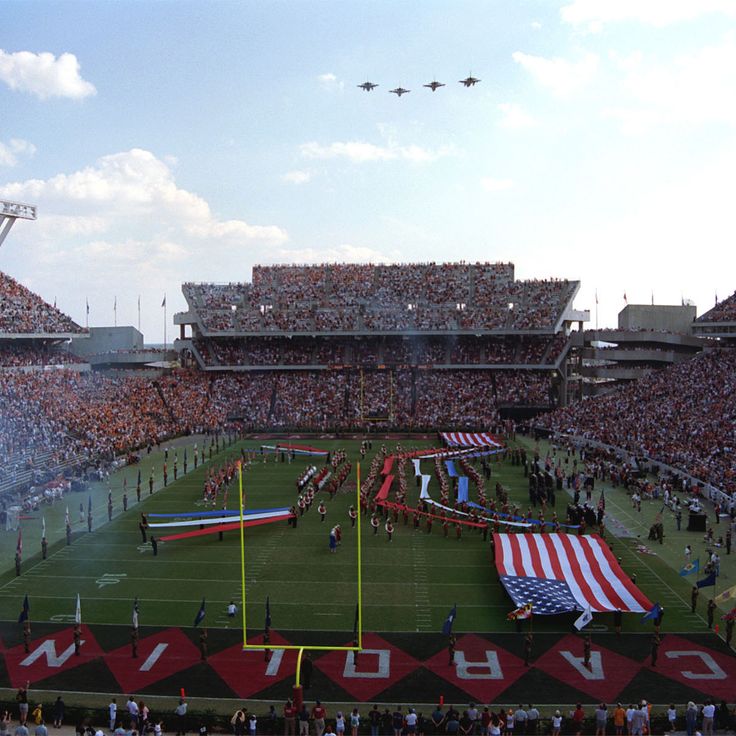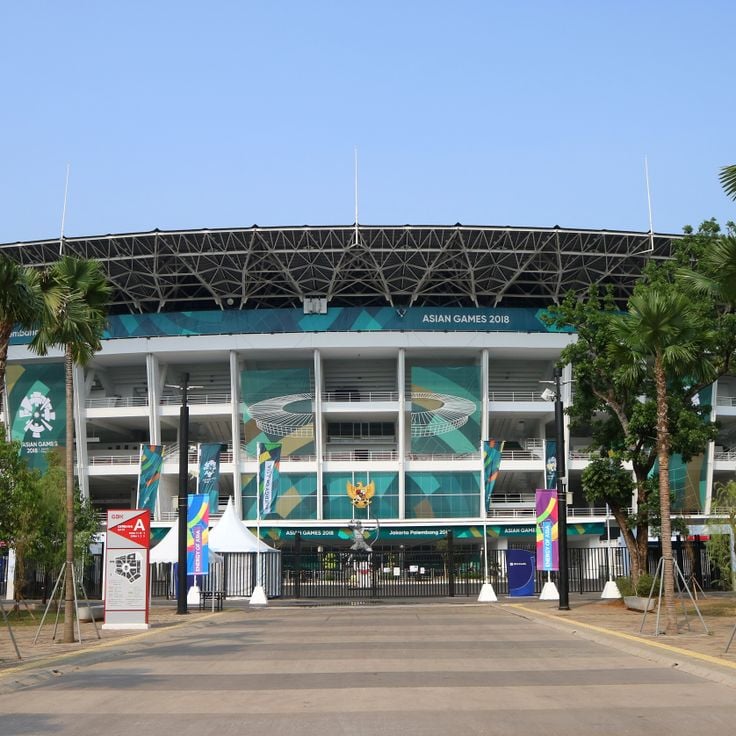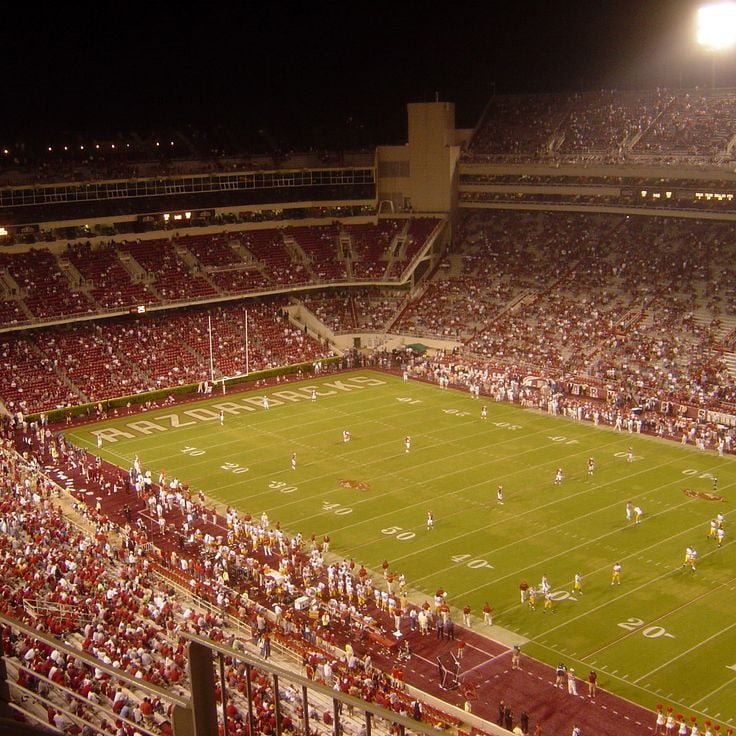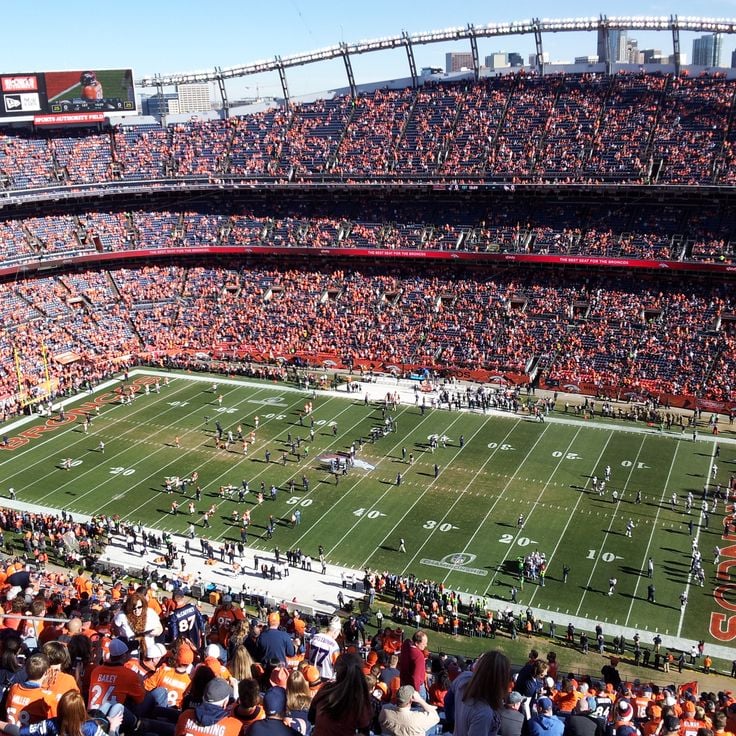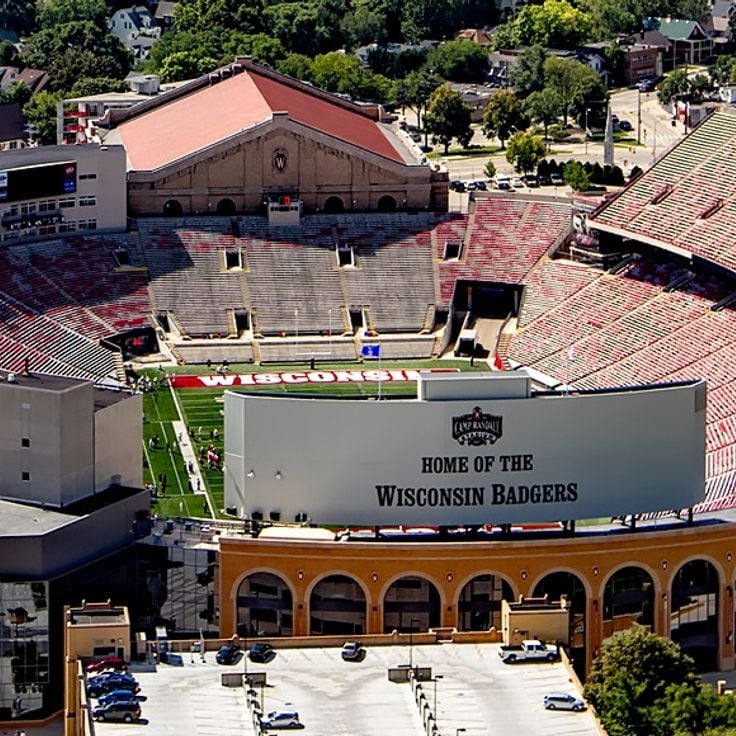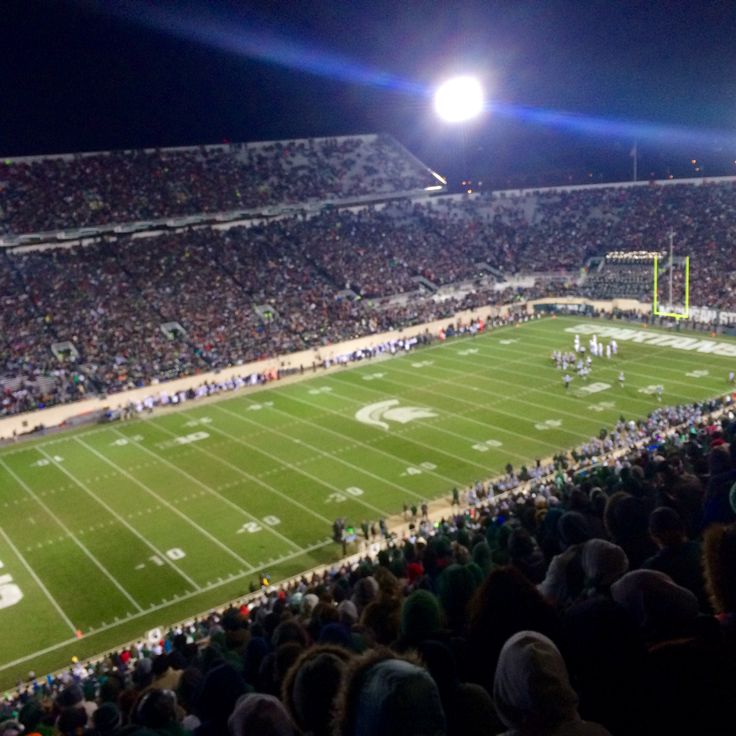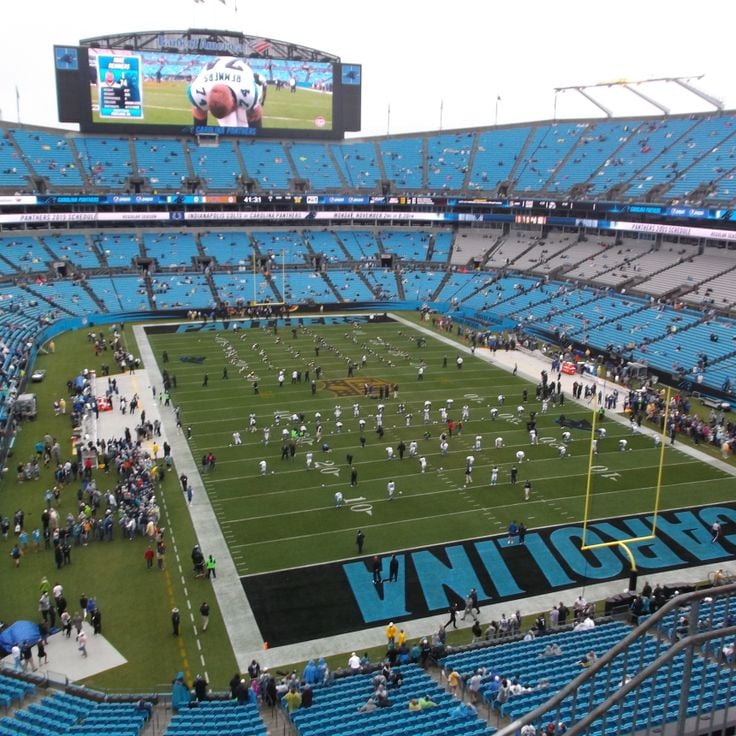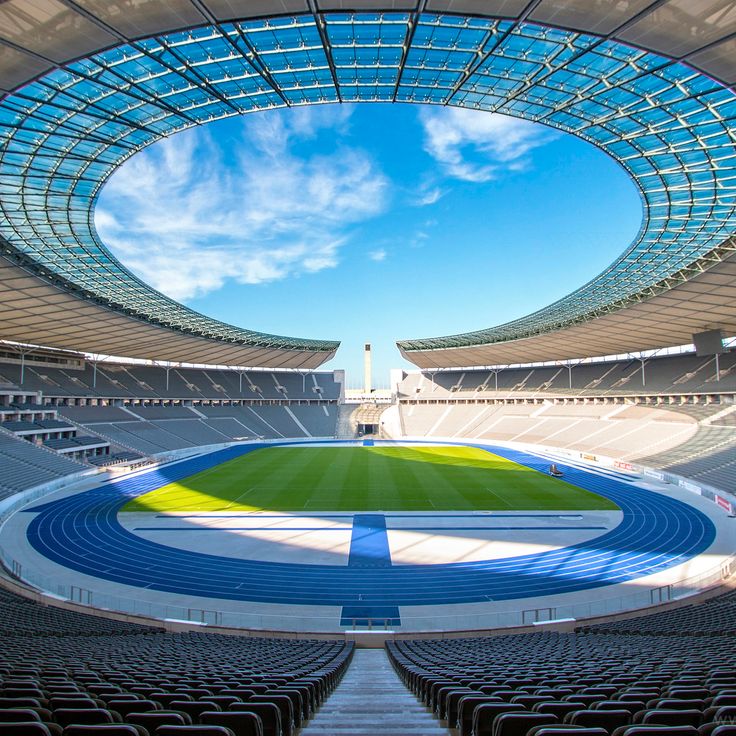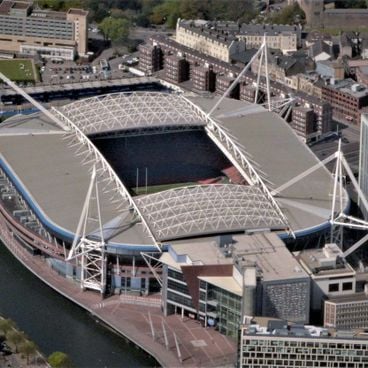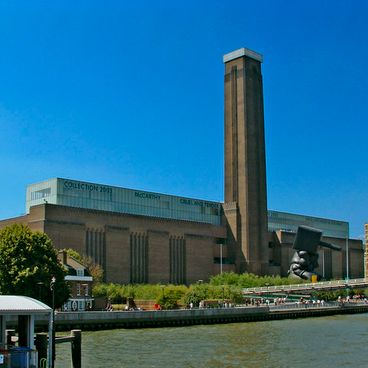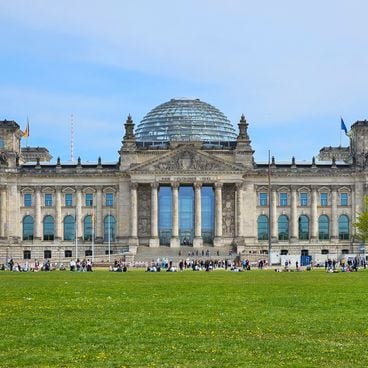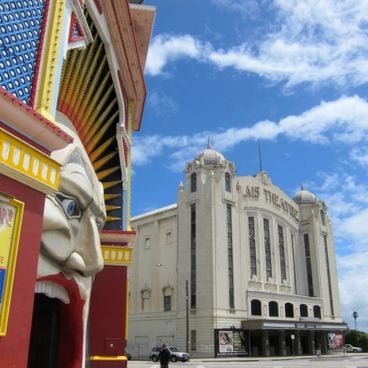This collection gathers the largest stadiums on the planet, ranked by seating capacity. From the Narendra Modi Stadium in Motera, India, which hosts major cricket matches, to the vast American university arenas dedicated to football, and the May Day Stadium in Pyongyang, North Korea, these sports facilities demonstrate the scale that infrastructures for competitions and mass gatherings can reach. Each stadium has its own identity: some are exclusively dedicated to a specific sport, while others serve as flexible venues capable of hosting various events. Their sizes enable them to accommodate between 100,000 and over 150,000 spectators, providing organizers the opportunity to gather large crowds for international competitions, national finals, or major ceremonies.
Narendra Modi Stadium, commonly known as Motera Stadium, has been the largest cricket stadium in the world since 2021 with an current capacity of 132,000 spectators. Originally built in 1983, it underwent its first renovation in 2006 before being completely demolished in 2015 for a full reconstruction completed in 2020, a project that involved an investment of $110 million. The stadium has also hosted major events, such as the Namaste Trump rally in February 2020 which brought together U.S. President Donald Trump and Indian Prime Minister Narendra Modi.
The First of May Stadium opened in 1989 and accommodates 114,000 spectators for football matches, athletics competitions, and the large-scale Arirang mass games. The facility spans eight floors and includes training areas and swimming pools. Located on Rungra Island in the Taedong River, the stadium serves as the primary venue for state events and sporting competitions in the North Korean capital.
Michigan Stadium is located on the campus of the University of Michigan and opened in 1927. With an official capacity of 107,601 seats, it ranks among the largest stadiums in the world. The facility primarily serves as home to the Michigan Wolverines football team. The architecture features a bowl design, with the seating area positioned largely below ground level. The stadium has undergone multiple renovations and expansions, adding modern facilities such as video screens and improved seating sections.
Beaver Stadium is located on the campus of Pennsylvania State University and opened in 1960. The facility has a capacity of 106,572 seats and serves as the home stadium of the Penn State Nittany Lions. The stadium has undergone multiple expansions and is named after James A. Beaver, a former Governor of Pennsylvania and university president. The seating areas span two tiers and completely surround the playing field.
Ohio Stadium serves as the home venue for the Ohio State University football team in Columbus. Opened in 1922, this facility accommodates 102,780 spectators, making it one of the largest sports venues in the United States. The characteristic horseshoe-shaped design defines the appearance of this stadium, which primarily hosts college football games for the Big Ten Conference. The stadium has undergone multiple renovations and modernizations while maintaining its original architectural form.
Kyle Field serves as the home stadium for the Texas A&M Aggies football team on the campus of Texas A&M University. With a capacity exceeding 102,000 seats, this stadium ranks among the largest sports venues in the United States. The facility first opened in 1927 and has undergone multiple expansions, including a comprehensive renovation between 2014 and 2015 that modernized infrastructure and added seating capacity. The stadium features a distinctive horseshoe design and regularly hosts NCAA Division I football games.
Tiger Stadium is located on the campus of Louisiana State University and serves as the home venue for the LSU Tigers football team. With a capacity exceeding 102,000 seats, the facility ranks among the largest stadiums in the United States. Opened in 1924, the stadium has undergone multiple expansions and renovations. The stands are positioned close to the field, creating an intense environment during Southeastern Conference games.
Neyland Stadium serves as the home of the Tennessee Volunteers, the University of Tennessee's football team. With a capacity exceeding 101,000 seats, this sports facility ranks among the largest stadiums in the United States. The venue opened in 1921 and bears the name of General Robert Neyland, a legendary coach at the university. The stadium sits on the banks of the Tennessee River at the heart of the campus and provides an energetic atmosphere during the college football season.
The Darrell K Royal-Texas Memorial Stadium serves as the home venue for the University of Texas at Austin football team. Opened in 1924, the facility now accommodates over 100,000 spectators. The stadium honors legendary coach Darrell Royal, who led the team from 1957 to 1976. The south end zone houses the Texas Athletics Hall of Fame Museum. Located on the university campus, the stadium hosts exclusively college football games. Multiple expansions have increased its capacity steadily over the decades.
Bryant-Denny Stadium stands on the campus of the University of Alabama and serves as home to the Alabama Crimson Tide football team. With a capacity exceeding 100,000 spectators, it ranks among the largest stadiums in the United States. The facility opened in 1929 and has undergone several expansions, most recently in 2010. The stadium features modern video boards, luxury suites, and seating sections. On game days, students, alumni, and football fans from across the country gather here.
The Melbourne Cricket Ground opened in 1853 and accommodates more than 100,000 spectators. This stadium regularly hosts cricket matches, Australian football games and international sporting events. The facility features modern stands, a museum dedicated to Australian sports history and numerous conference rooms. The MCG hosted the 1956 Summer Olympics and the 2015 Cricket World Cup.
Camp Nou is the largest football stadium in Europe with a capacity of 99,354 seats. Since its opening in 1957, it has been the home of FC Barcelona and was designed by architect Francesc Mitjans. The structure includes three levels and hosts football matches as well as the club museum, the most visited museum in Catalonia. The Camp Nou has undergone significant renovations to increase its capacity to 105,000 seats and incorporate modern facilities.
The Maracanã Stadium opened in 1950 for the FIFA World Cup and currently holds 78,838 spectators. This sports venue in the Maracanã neighborhood hosted two World Cup finals, the opening and closing ceremonies of the 2016 Olympic Games, and numerous matches of the Brazilian national football team. The stadium serves as home ground for Flamengo and Fluminense clubs. Extensive renovations between 2010 and 2013 added a modern roof structure and upgraded facilities. Throughout its history, the Maracanã has welcomed over 200 million visitors and demonstrates the central role of football in Brazilian culture.
FNB Stadium in Johannesburg is Africa's largest stadium with a capacity of 94,736 spectators. This facility opened in 1989 and underwent extensive renovation for the 2010 FIFA World Cup. The stadium serves as home ground for the South African national football team and regularly hosts major sporting events and concerts. Its distinctive architecture featuring a calabash-inspired design makes it one of the continent's most recognizable sporting venues.
Sanford Stadium is located on the University of Georgia campus and serves as the home venue for the Georgia Bulldogs football team. The facility opened in 1929 and currently accommodates over 92,000 spectators. The stadium has undergone multiple expansions and renovations throughout the decades. The architecture combines traditional elements with contemporary facilities. Sanford Stadium ranks among the largest college football venues in the United States and serves as a central location for the university's athletic events.
The Cotton Bowl Stadium is located in Fair Park, Dallas, and was constructed in 1930 in the Art Deco architectural style. This venue accommodates 92,100 spectators and hosts American football, soccer, and various sporting events. The stadium has been the site of several significant games, including Super Bowl matches and collegiate football competitions. Its architectural design reflects the construction methods of the 1930s and has undergone multiple renovations throughout the decades.
Wembley Stadium is England's national sports venue in northwest London. This facility holds 90,000 seats and opened in 2007. The distinctive arch spans 133 metres in height and forms a widely visible landmark. The stadium hosts matches of the England national football team, FA Cup finals, as well as concerts and other major events. Infrastructure includes a retractable roof over the seating areas and modern facilities for players and visitors. The stadium stands on the site of the original Wembley Stadium from 1923.
The Rose Bowl Stadium is a historic sports venue in Pasadena, California, inaugurated in 1922. With a seating capacity of 92,542, it ranks among the largest stadiums in the United States. The stadium hosts the annual Rose Bowl Game, one of college football's most traditional contests. The facility served as a venue for two Olympic football tournaments, the 1994 FIFA World Cup, and several Women's World Cup finals. The Rose Bowl features a distinctive bowl-shaped design and sits within a natural valley at the base of the San Gabriel Mountains.
Lusail Stadium was constructed for the 2022 FIFA World Cup and accommodates 88,966 spectators. The venue features a retractable roof and advanced cooling systems that maintain comfortable temperatures during matches. The stadium's facade displays geometric patterns inspired by traditional Arab art and craftsmanship. Following the World Cup, the stadium is being transformed into a community hub incorporating schools, shops, and healthcare facilities.
Ben Hill Griffin Stadium, commonly known as "The Swamp", serves as the home venue for the University of Florida football team in Gainesville. Opened in 1930, the stadium has undergone multiple expansions to reach a capacity of approximately 88,548 seats. The facility features continuous seating bowl architecture that creates an intense environment during Florida Gators home games. Located on the university campus, the stadium is dedicated exclusively to college football.
The Jordan-Hare Stadium hosts the Auburn Tigers college football team at Auburn University. With a capacity of over 88,000 spectators, it is among the largest sports venues in the United States. The stadium opened in 1939 and was renamed in 1973 in honor of former coach Ralph Jordan and alumnus Clifford Hare. The stadium has undergone several expansions and renovations over the decades to meet the increasing demands of college football and enhance the spectator experience.
Estadio Azteca opened in 1966 with a capacity of 87,523 spectators. This stadium hosted two FIFA World Cup finals, in 1970 and 1986, making it the only venue worldwide to achieve this distinction. The architecture features a distinctive oval shape with a continuous roof covering the stands. Club América and the Mexican national team use this facility as their home ground. The structure sits at an elevation of 2,200 meters in southern Mexico City.
The National Stadium Bukit Jalil was built in 1998 for the Commonwealth Games and hosts 87,500 spectators. The facility features a fully covered roof protecting all seats, as well as an athletics track and a grass field for football and rugby. The stadium is home to the Malaysian national football team and regularly hosts international sporting events and concerts of renowned artists.
Borg El Arab Stadium is located west of Alexandria and has a capacity of 86,000 seats. This stadium opened in 2007 and serves as the home ground for the Egyptian national football team. The facility meets FIFA international standards and features modern amenities for sporting events. The stadium is primarily used for football matches and has hosted several major tournaments.
Memorial Stadium in Lincoln serves as the home venue for the Nebraska Cornhuskers, the football team of the University of Nebraska. With a capacity exceeding 85,000 spectators, this stadium opened in 1923 ranks among the largest sports facilities in the United States. On game days, Lincoln becomes Nebraska's third-largest city as fans travel from across the state. The stadium has undergone multiple renovations and expansions while preserving its original brick architecture.
Salt Lake Stadium in Kolkata was inaugurated in 1984 and has a capacity of 85,000 spectators. This stadium serves as the primary venue for football matches and athletics events in West Bengal. The three-tier structure features an oval shape with continuous seating rows. The stadium has hosted several national and international sporting events, including matches from the 2017 FIFA U-17 World Cup. The facility underwent major renovation in 2011, receiving modern lighting systems and improved spectator amenities.
The Estadio Monumental Antonio Vespucio Liberti serves as the home ground of River Plate football club in the Núñez neighborhood. Opened in 1938, the stadium accommodates over 83,000 spectators and ranks among the largest football venues in South America. The facility hosted major competitions including the 1978 World Cup final and several Copa América tournaments. Its four covered stands fully enclose the pitch, creating a distinctive environment during home matches.
MetLife Stadium is located in the Meadowlands Sports Complex in New Jersey and serves as home to two NFL teams, the New York Giants and the New York Jets. With a capacity of 82,500 spectators, it ranks among the largest stadiums in the United States. The facility opened in 2010 and features an open-air design. The stadium hosted Super Bowl XLVIII in 2014 and regularly welcomes international soccer matches and major events.
Croke Park is the largest stadium in Ireland with a capacity of 82,300 spectators. This stadium in the Drumcondra area of Dublin serves as the principal venue for Gaelic sports, particularly Gaelic football and hurling. Croke Park was founded in 1884 and has undergone several renovations, with the most recent major redevelopment taking place between 1993 and 2005. The stadium features four modern stands and houses the GAA Museum, which documents the history of Gaelic sports. In addition to sporting events, Croke Park also hosts concerts and other large-scale events.
Twickenham Stadium is located in southwest London and serves as the home of England's national rugby union team. With a capacity of 82,000 spectators, it is the largest dedicated rugby stadium in the world. The facility opened in 1909 and has undergone multiple expansions and modernizations over the decades. In addition to international matches, the stadium regularly hosts Six Nations Championship games and finals of various domestic competitions. The venue includes an on-site museum that documents the history of English rugby.
Accor Stadium was constructed for the 2000 Summer Olympics and holds a maximum capacity of 83,500 spectators. This multipurpose venue hosts rugby matches, football games, cricket contests and international concerts. The stadium features a retractable roof over the stands and a modular configuration that accommodates different event formats. Located within Sydney Olympic Park, the facility serves as home ground for several professional sports teams in the city.
Memorial Stadium in Clemson serves as the home venue for the Clemson Tigers, the football team of Clemson University. With a capacity exceeding 81,000 spectators, it ranks among the largest college stadiums in the United States. The facility opened in 1942 and has undergone multiple expansions over the decades. The stadium bears the nickname "Death Valley" and features its distinctive orange color and steep stands that create an intense environment during home games.
Lambeau Field serves as the home stadium of the Green Bay Packers in the National Football League. Opened in 1957, the facility accommodates over 81,000 spectators and ranks among the oldest continuously operating stadiums in professional football. The venue features modern lighting systems, video scoreboards, and covered seating sections. The stadium bears the name of Curly Lambeau, founder and former coach of the Packers. During winter months, games take place in freezing conditions, earning the venue its nickname "The Frozen Tundra.".
Signal Iduna Park serves as the home stadium of Borussia Dortmund football club. The stadium opened in 1974 and has a capacity of 81,365 spectators, making it the largest football stadium in Germany. The South Stand accommodates 25,000 standing places, representing the largest standing terrace in Europe. The stadium features a fully covered roof and modern facilities for players and spectators.
Luzhniki Stadium is Russia's largest sports facility with a capacity of 81,000 spectators. Built in 1956, this arena underwent complete renovation in 2017 and served as the main venue for the 2018 FIFA World Cup. The stadium is located on the right bank of the Moskva River within the Luzhniki sports complex and hosts home matches of the Russian national football team. The facility features a modern roof covering all seats, an athletics track, and infrastructure for various sporting events.
The Stade de France was built in 1998 for the FIFA World Cup in Saint-Denis and accommodates 80,698 spectators. The elliptical structure features a retractable roof and hosts international football matches of the French national team as well as rugby competitions. The complex serves as a venue for athletics events and concerts. The architecture combines steel and concrete with a movable seating structure that allows adaptations for different sports.
Shah Alam Stadium is located in the capital city of Selangor state. Opened in 1994, this facility has a capacity of 80,372 seats, making it one of the largest stadiums in Southeast Asia. The stadium primarily serves as a venue for football matches and is home to Selangor FA. Its architecture features a distinctive roof with a radial design that provides partial coverage over the stands. In addition to football, the stadium hosts athletics events, concerts, and cultural gatherings. The running track surrounds the pitch according to international standards.
The Gaylord Family Oklahoma Memorial Stadium stands on the campus of the University of Oklahoma in Norman. This stadium serves as home to the Oklahoma Sooners football team. The facility opened in 1923 and has undergone multiple expansions. Today, the stadium accommodates over 80,000 spectators. The stands extend along both sides of the playing field, creating a formidable setting for home games. Since 2002, the stadium bears the name of the Gaylord family, who contributed significantly to financing its modernization. The facility features modern scoreboards and amenities for players and visitors.
Stade Monumental U is located in the Ate district in eastern Lima and serves as the home stadium of football club Universitario de Deportes. This sports venue opened in 2000 and accommodates approximately 80,000 spectators, making it one of the largest stadiums in South America. The stadium features modern facilities and regularly hosts national and international football matches. The complex includes multi-level stands as well as VIP areas and press facilities.
The Giuseppe Meazza Stadium opened in 1926 and serves as Italy's largest football venue with a capacity of 75,817 seats. This facility in the San Siro district functions as the home ground for two major clubs: AC Milan and Inter Milan. The distinctive structure features four cylindrical towers and eleven spiral ramps supporting the roof. The stadium has hosted significant competitions, including matches during the 1934 and 1990 World Cups and the 2016 Champions League final. The playing surface measures 105 by 68 meters and meets international standards for football competitions.
The Huizhou Olympic Stadium is located in Huizhou city, Guangdong Province. This modern sports facility was designed to host major sporting events and has a capacity of several tens of thousands of spectators. The stadium serves as a venue for athletics competitions, football matches, and other large-scale sporting events. The architecture combines functional elements with contemporary design features that meet international sports venue standards.
The Stade des Martyrs is the largest stadium in the Democratic Republic of the Congo with a capacity of 80,000 spectators. This sports facility was built in 1994 following Chinese designs and serves as the home stadium for the Congolese national football team. The stadium is located in the Lingwala district of Kinshasa and regularly hosts major football matches as well as official events. The venue features an oval shape with covered stands and accommodates athletics competitions thanks to its 400-meter running track.
The Beijing National Stadium was constructed for the 2008 Summer Olympics and accommodates 80,000 spectators. The steel structure resembling a bird's nest covers an area of 258,000 square meters. The stadium now serves as a venue for international athletics competitions and Chinese Super League football matches. Architects Herzog & de Meuron designed this sports facility in collaboration with artist Ai Weiwei in the Olympic Park.
AT&T Stadium opened in 2009 and serves as the home venue for the Dallas Cowboys. The facility holds 80,000 seats, expandable to over 100,000 for events. The retractable roof and large glass facades define the architectural design. Inside, a 55-meter-wide video board hangs above the playing field. The stadium hosts football games, concerts, and other sporting events.
Bobby Bowden Field at Doak Campbell Stadium is located on the campus of Florida State University in Tallahassee. This stadium serves as the home venue for the Seminoles, the university's college football team. With a capacity exceeding 79,000 spectators, it ranks among the largest stadiums in college football. The stadium opened in 1950 and has undergone multiple expansions and renovations over the decades. It bears the name of legendary coach Bobby Bowden, who led the Seminoles to numerous successes over several decades.
The Santiago Bernabéu Stadium serves as the home ground for Real Madrid. This facility opened in 1947 and accommodates over 81,000 spectators. The stadium has undergone numerous renovations, including a comprehensive modernization that features a retractable roof and new technologies. The complex houses a museum dedicated to the club's history, along with retail spaces and hospitality areas. The Santiago Bernabéu has hosted multiple European competition finals as well as matches during the 1982 FIFA World Cup.
Azadi Indoor Stadium is located in Tehran and ranks among the largest multipurpose arenas in the country. This sports venue was designed for basketball, volleyball, and other indoor sports. The stadium features multiple seating tiers and accommodates thousands of spectators. The facility regularly hosts national and international sports competitions. Azadi Indoor Stadium is part of the larger Azadi Sports Complex, which includes various sports facilities.
Notre Dame Stadium serves as the home field for the University of Notre Dame's Fighting Irish football team. This stadium opened in 1930 and accommodates over 77,000 spectators. The facility features a brick exterior and the distinctive Touchdown Jesus mural visible from inside the venue. Located on the university campus in South Bend, Indiana, the stadium hosts exclusively college football games and maintains strong traditions tied to the university's athletic program.
The Atatürk Olympic Stadium is located in the Başakşehir district on the European side of Istanbul. This facility opened in 2002 and has a capacity of over 76,000 spectators. The stadium serves as the home venue for the Turkish national football team and hosts major national and international competitions. The architecture features a partially covered roof and modern infrastructure. The stadium has been the venue for several significant football matches, including the UEFA Champions League finals in 2005 and 2023.
Williams-Brice Stadium serves as the home venue for the South Carolina Gamecocks football team representing the University of South Carolina. The stadium opened in 1934 and currently accommodates over 77,000 spectators. Located south of the campus in Columbia, the facility is dedicated exclusively to college football. Several renovations and expansions have increased its capacity over the decades. The stadium bears the name of the Williams-Brice family, who contributed significantly to its funding.
The Los Angeles Memorial Coliseum is a historic stadium located in Exposition Park, Los Angeles. Opened in 1923, this facility accommodates over 77,000 spectators. The stadium hosted the Summer Olympic Games in 1932 and 1984, and will serve as a venue for the 2028 Olympics. It serves as home to the USC Trojans football team and has been used by various professional football franchises throughout its history. The architecture combines neoclassical design elements with modern renovations that have enhanced comfort and functionality for contemporary events.
The Stade aquatique Gelora Bung Karno is an aquatic facility located within the Gelora Bung Karno Sports Complex in Central Jakarta. This venue was constructed for the 2018 Asian Games and features an Olympic-size swimming pool with a seating capacity of 7,000 spectators. The stadium serves as a competition venue for national and international swimming events as well as water polo matches. The architecture follows modern standards for aquatic facilities with grandstands surrounding the main pool.
Arrowhead Stadium serves as the home venue for the Kansas City Chiefs of the National Football League. With a capacity exceeding 76,000 spectators, it ranks among the largest stadiums in the NFL. The facility opened in 1972 and has gained recognition for its exceptional crowd noise levels during games, which have set multiple records. The stadium features modern amenities and has undergone several renovations to enhance spectator comfort and facilities.
The Donald W. Reynolds Razorback Stadium is located on the campus of the University of Arkansas in Fayetteville and serves as the home venue for the Razorbacks football team. The facility opened in 1938 and has undergone multiple expansions over the decades. This stadium has a capacity exceeding 76,000 seats, making it one of the larger college football stadiums in the United States. The seating surrounds the playing field on all sides, with the north end featuring modern expansions that have increased its overall capacity.
Empower Field at Mile High serves as the home stadium for the Denver Broncos of the National Football League. Opened in 2001, the facility accommodates over 76,000 spectators. The stadium sits at an elevation of approximately 5,280 feet above sea level, which accounts for its "Mile High" designation. The structure features a modern steel framework with five seating tiers and regularly hosts football games along with occasional concerts and other sporting events.
Camp Randall Stadium serves as the home venue for the Wisconsin Badgers football team of the University of Wisconsin-Madison. With a capacity exceeding 80,000 spectators, the stadium ranks among the largest college football facilities in the United States. The facility opened in 1917 and takes its name from Camp Randall, a former Union Army training ground during the Civil War. The stadium features multiple tiers and a distinctive horseshoe configuration. Throughout the fall season, it hosts regular NCAA Division I football games.
The Allianz Arena in Munich's Fröttmaning district opened in 2005 with a capacity of 75,000 spectators. This stadium serves as home ground for FC Bayern München and features a distinctive exterior made of 2,874 diamond-shaped ETFE foil air panels that can be illuminated in different colors. Architects Herzog & de Meuron designed the venue with three tiers and modern facilities for players, media, and visitors. Beyond hosting Bundesliga matches, the stadium has accommodated fixtures from the 2006 FIFA World Cup and the 2024 UEFA European Championship.
Spartan Stadium serves as the home venue for the Michigan State University Spartans football team in East Lansing. This facility opened in 1923 and accommodates over 75,000 spectators. The stadium hosts college football games as part of the Big Ten Conference. The structure has undergone several expansions and renovations throughout the decades. Seating extends along both sides of the playing field. The stadium features modern scoreboards and facilities for players and visitors.
The Bank of America Stadium opened in 1996 and accommodates 75,523 spectators. This sports facility serves as home to the Carolina Panthers of the National Football League and Charlotte FC of Major League Soccer. The stadium features an open-air design with natural grass and is located in the heart of Charlotte, North Carolina. The venue regularly hosts football games, soccer matches, and occasional concerts.
The Berlin Olympic Stadium was constructed for the 1936 Summer Olympics and holds a capacity of 74,475 spectators. Located in the Westend district, the facility serves as the home ground for football club Hertha BSC and hosted the 2006 FIFA World Cup Final. The stadium features an oval design with characteristic natural stone facades and a partially covered spectator area. Following extensive renovation works between 2000 and 2004, the stadium received a retractable roof and modern technical installations while preserving its historical structure.
